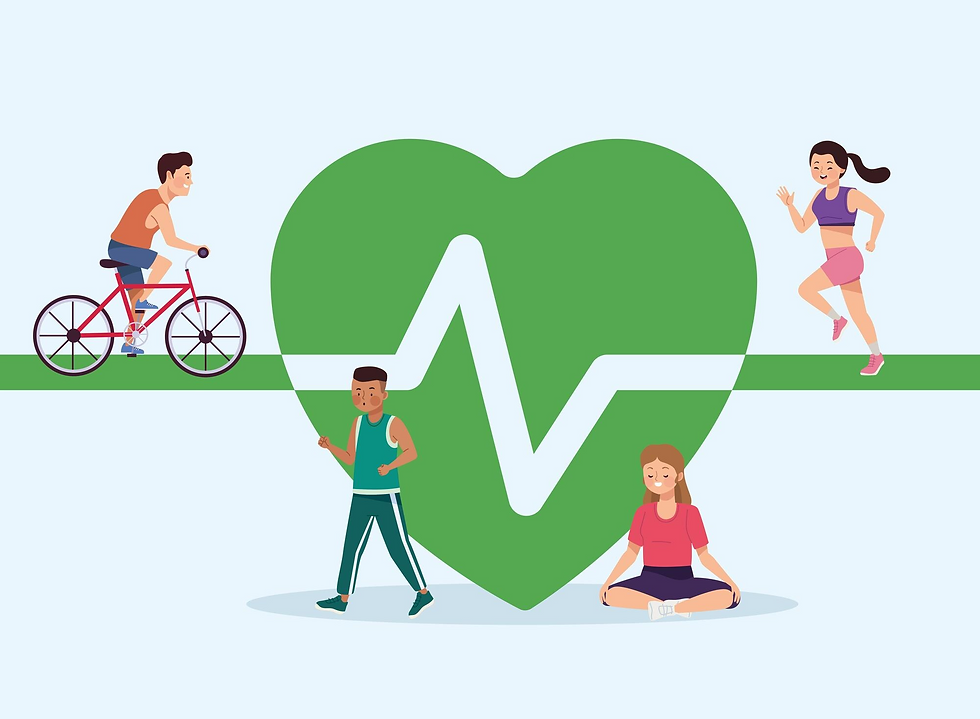Osteoporosis: Understanding and Maintaining Strong Bones
- Apurvasai Lakshmanan
- Mar 5
- 3 min read
Updated: Apr 1

Osteoporosis is a condition that weakens bones, making them fragile and more likely to break. It's like your bones become less dense and more porous, like a sponge. This means even a minor fall or bump can cause a fracture.
What is Osteoporosis?
Our bones are constantly being broken down and rebuilt. When we're young, our bodies build new bone faster than we break down old bone, so our bone mass increases. But as we age, this process slows down, and we start to lose bone mass faster than we create it. If this loss becomes too significant, it can lead to osteoporosis.
Osteoporosis is often diagnosed with a bone density test, which measures how strong your bones are. The results are usually given as a T-score:
Normal: A T-score of -1.0 or above.
Osteopenia: A T-score between -1.0 and -2.5. This means you have lower than normal bone density and are at risk of developing osteoporosis.
Osteoporosis: A T-score of -2.5 or below.
Causes of Osteoporosis
Several factors can increase your risk of developing osteoporosis:
Age: Bone density naturally decreases with age.
Gender: Women are more likely to develop osteoporosis than men, especially after menopause, due to a drop in estrogen levels.
Genetics: Having a family history of osteoporosis increases your risk.
Race: Caucasians and Asians are at higher risk.
Body Size: People with smaller body frames tend to have a higher risk because they may have less bone mass to begin with.
Hormone Levels: Low estrogen levels (in women) and low testosterone levels (in men) can contribute to bone loss.
Diet: Low calcium and vitamin D intake can weaken bones.
Lifestyle: Lack of physical activity, smoking, and excessive alcohol consumption can increase your risk.
Certain Medical Conditions: Some medical conditions, such as rheumatoid arthritis and celiac disease, can increase the risk of osteoporosis.
Medications: Long-term use of certain medications, such as corticosteroids, can also weaken bones.
Consequences of Untreated Osteoporosis
The most serious consequence of osteoporosis is an increased risk of fractures, particularly in the hip, spine, and wrist. These fractures can lead to:
Pain: Fractures can cause significant pain and discomfort.
Disability: Hip and spine fractures can lead to long-term disability and difficulty performing daily activities.
Loss of Independence: Fractures can make it difficult to live independently.
Reduced Quality of Life: Osteoporosis and fractures can significantly impact your overall quality of life.
Management and Treatment
The goal of osteoporosis management is to prevent fractures by strengthening bones. This typically involves:
Diet: Eating a diet rich in calcium and vitamin D. Good sources of calcium include dairy products, leafy green vegetables, and fortified foods. Vitamin D can be obtained from sunlight, fortified foods, and supplements.
Exercise: Weight-bearing exercises, such as walking, jogging, and dancing, help strengthen bones.
Lifestyle Changes: Quitting smoking and limiting alcohol consumption.
Medication: Several medications are available to treat osteoporosis and reduce the risk of fractures. These medications can help slow bone loss or increase bone density.
Osteoporosis is a common condition, but it's not an inevitable part of aging. By adopting a healthy lifestyle and following medical advice, you can protect your bones and reduce your risk of fractures.
References
National Osteoporosis Foundation. (2023). "What is Osteoporosis and What Causes It?"
Mayo Clinic. (2023). "Osteoporosis - Symptoms and Causes."
World Health Organization. (2023). "Osteoporosis."
Assessed and Endorsed by the MedReport Medical Review Board






